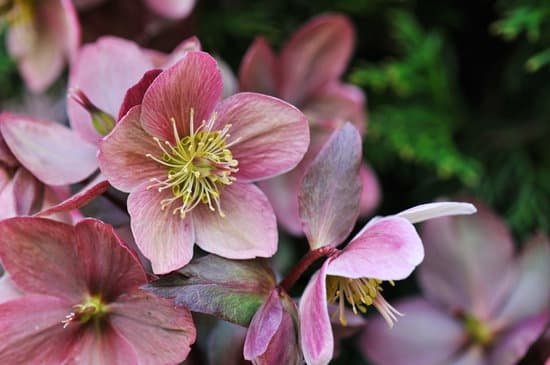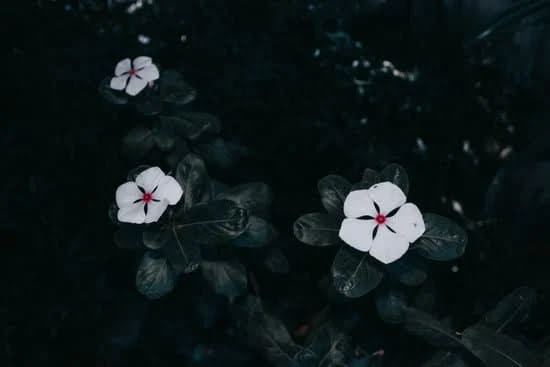
Spring gardening is an exciting time for avid gardeners and beginners alike. After a long winter, it’s the perfect opportunity to get outdoors, connect with nature, and create a beautiful and thriving garden. The arrival of spring brings with it a sense of renewal and growth, making it the ideal season to start planning, preparing, and planting your garden.
Whether you have a small balcony or a large backyard, there are endless possibilities when it comes to spring gardening. From vibrant flowers to delicious vegetables and herbs, you can cultivate a space that not only enhances the aesthetics of your surroundings but also provides you with fresh produce and a soothing environment.
In this comprehensive guide, we will explore everything you need to know about spring gardening. From the importance of planning your garden to choosing the right plants, preparing the soil for optimal growth, implementing essential gardening techniques, combating pests and diseases, maintaining your garden’s health, and even designing stunning displays – we’ve got you covered. Get ready to dig in and discover how to make this spring gardening season your most successful yet.
The Importance of Planning your Spring Garden
Spring is an exciting time for gardeners as they eagerly prepare to bring their gardens back to life after the winter season. However, before diving into planting and tending to your garden, it is essential to properly plan and prepare. Planning your spring garden can help ensure that you have a successful and thriving garden throughout the season.
Determining Your Goals
The first step in planning your spring garden is determining your goals. Are you looking to grow vegetables, flowers, or both? Do you want to create a specific theme or design? Understanding your goals will help guide your decisions when it comes to choosing plants, preparing the soil, and designing your garden layout.
Evaluating Your Space
Once you have established your goals, evaluate the space available for your spring garden. Consider factors such as sunlight exposure, soil quality, and drainage. Some plants require full sun, while others thrive in shaded areas. Additionally, certain plants may have soil requirements that need to be addressed before planting. By evaluating your space, you can make informed decisions about which plants will thrive in each area of your garden.
Creating a Garden Layout
Once you have determined your goals and evaluated your space, it’s time to create a garden layout. Consider how much space each plant will need as it grows and plan accordingly. You may also want to consider companion planting, where certain plants are grown together to benefit one another.
This can help with pest control or enhance flavors in vegetable gardens. Sketch out a rough design of where each plant will be placed in the garden bed so that you can see how everything fits together.
With proper planning and preparation, you can set yourself up for a successful spring gardening experience. Taking the time to determine your goals, evaluate the available space, and create a well-thought-out garden layout will ensure that you make the most of this vibrant season. Happy gardening.
Essential Tools and Supplies for Spring Gardening Success
Spring gardening can be an exciting and rewarding experience, but in order to ensure success, it is important to have the right tools and supplies on hand. Having the necessary equipment will not only make your gardening tasks easier but also help you achieve better results. Below are some essential tools and supplies that every gardener should consider for a successful spring garden.
Garden Gloves
One of the first tools that every gardener should have is a pair of sturdy garden gloves. These gloves provide protection for your hands from thorns, sharp objects, and dirt. They also help prevent blisters and keep your hands clean while working in the garden. Look for gloves that are made with durable materials such as leather or thick fabric, and ensure they fit well so you have full dexterity when handling plants and tools.
Hand Trowel
A hand trowel is a versatile tool that will come in handy for various gardening tasks such as planting, weeding, digging small holes, and transferring seedlings. Invest in a high-quality stainless-steel trowel with a comfortable handle grip that feels ergonomic in your hand. This tool will be used frequently throughout the spring season.
Garden Hoe
A garden hoe is an essential tool for preparing your soil and keeping it weed-free. It has a flat metal blade attached to a long handle and can be used to break up compacted soil, remove weeds, create furrows for planting seeds, and cultivate the soil’s surface. Choose a hoe with a sturdy handle made from wood or fiberglass for durability.
Watering Can or Hose
Proper watering is crucial for the success of your spring garden. Consider whether you prefer using a watering can or a hose with adjustable nozzles to deliver water directly to your plants’ roots. A watering can is ideal for small gardens or container plants, while a hose is more convenient for larger gardens. Whichever option you choose, make sure it has a nozzle that allows you to control the water flow.
Pruning Shears
Pruning shears are indispensable for maintaining the health and appearance of your spring garden. They can be used to trim dead or damaged branches, shape bushes and shrubs, remove spent flowers, and harvest herbs or vegetables. Look for pruning shears with sharp blades made from stainless steel and ergonomic handles that provide a comfortable grip.
By having these essential tools and supplies on hand, you will be well-prepared to tackle the tasks involved in spring gardening. Whether you are a seasoned gardener or just starting out, investing in quality equipment will make your gardening experience more enjoyable and lead to better results. Remember to clean and properly store your tools after each use to ensure their longevity and efficiency for future seasons.
Choosing the Perfect Plants for Your Spring Garden
Spring is the perfect time to start planning your garden and selecting the perfect plants to fill it with vibrant colors and fragrant blooms. When choosing plants for your spring garden, there are several factors to consider, including sun exposure, soil type, and the climate of your region. By selecting the right plants for your garden, you can ensure a successful and stunning display throughout the spring season.
Consider Sun Exposure
Some plants thrive in full sun, while others prefer partial or full shade. Before purchasing any plants, it’s important to know how much sunlight your garden receives throughout the day. This will help you choose plants that are adapted to those light conditions and will flourish in your specific environment. Be sure to read plant labels or consult gardening resources for information on each plant’s sun requirements.
- If you have a sunny spot in your garden, consider planting vibrant flowers like sunflowers, marigolds, or zinnias.
- In shady areas of your garden, opt for plants like hostas, begonias, or ferns that thrive in lower light conditions.
Assess Soil Type
Different types of plants have different soil preferences. Some may require well-draining soil, while others thrive in moist or even waterlogged conditions. Before choosing plants for your spring garden, take some time to evaluate the quality and texture of your soil.
- If you have sandy soil that drains quickly, consider planting drought-tolerant flowers like lavender or succulents.
- If you have clayey soil that retains moisture, look for plants like daylilies or astilbes that can withstand wetter conditions.
Consider Climate
It’s crucial to choose plants that are suitable for the climate of your region. Different plants have different temperature tolerances and may not thrive in extreme heat or cold.
- If you live in a colder region, opt for spring-blooming bulbs like tulips or daffodils, which can withstand frost and bloom beautifully in early spring.
- In warmer regions, consider planting heat-loving flowers like geraniums or petunias that will continue to bloom throughout the spring season.
By taking into account these factors – sun exposure, soil type, and climate – you can make informed decisions about the perfect plants for your spring garden. Choose a variety of plants with different colors, heights, and blooming times to create an eye-catching and dynamic display that will bring joy and beauty to your outdoor space throughout the spring season.
Preparing Your Soil
Preparing the soil is a crucial step in creating a healthy and thriving garden bed. The quality and condition of the soil directly impact the growth and productivity of your plants. By following some essential tips for preparing your soil, you can ensure that your spring garden will have a strong foundation for success.
The first step in preparing your soil is to remove any weeds or grass from the designated area. Weeds compete with your plants for nutrients and water, so it’s important to eliminate them before planting. Use a hoe or hand tools to dig up the weeds, making sure to remove their roots as well.
Next, you want to loosen the soil to promote good drainage and root penetration. This can be done by using a garden fork or tiller to break up compacted soil. Avoid over-tilling, as this can disrupt beneficial organisms in the soil and lead to nutrient loss.
Once you’ve loosened the soil, it’s time to amend it with organic matter such as compost or well-rotted manure. Organic matter improves soil structure, increases its ability to hold moisture and nutrients, and provides essential micronutrients for plant growth. Spread a layer of compost or manure over the top of your garden bed and mix it into the soil using a rake or shovel.
Lastly, consider conducting a soil test to determine its pH level and nutrient content. This will help you identify any deficiencies or imbalances that need to be corrected before planting. You can purchase a home testing kit or send a sample of your soil to a local agricultural extension office for analysis.
By taking these steps to prepare your soil properly, you are setting yourself up for gardening success in the spring season. Healthy soil ensures that your plants have access to the necessary nutrients, water retention capacity, and proper root development. With good preparation, your spring garden will thrive and provide you with beautiful blooms and bountiful harvests throughout the season.
Spring Gardening Techniques
Planting, watering, and pruning are essential techniques for a successful spring garden. These practices ensure that your plants are properly cared for and have the best chance to thrive.
When it comes to planting in your spring garden, there are a few key considerations to keep in mind. First, it is important to choose the right location for each plant based on its sun and shade preferences. Some plants may require full sun, while others thrive in partial shade. Additionally, consider the spacing requirements of each plant to allow for proper growth and airflow.
Once you have determined the ideal location for your plants, it is time to dig the holes for planting. The size of the hole should be large enough for the roots to fit comfortably without being overcrowded. Gently loosen the roots before placing them in the hole and backfill with soil, ensuring that no air pockets remain around the roots.
Watering is another crucial aspect of maintaining a healthy spring garden. Newly planted seedlings or transplants should be watered immediately after planting to help settle the soil and encourage root growth. In general, gardens should be watered deeply but infrequently to promote deep root growth. Aim to provide about 1 inch of water per week, either through rainfall or irrigation.
Pruning plays an important role in shaping and maintaining the overall health of your spring garden plants. Regular pruning helps remove dead or diseased branches, encourages new growth, and promotes better air circulation within the plant canopy. Different plants may require specific pruning techniques or schedules, so it is important to research individual plant needs before proceeding.
| Technique | Description |
|---|---|
| Planting | Choose the right location and dig proper holes for planting. |
| Watering | Ensure newly planted seedlings are watered immediately, provide about 1 inch of water per week. |
| Pruning | Remove dead or diseased branches, encourage new growth, and promote air circulation within plants. |
Dealing with Common Spring Garden Pests and Diseases
Springtime is the perfect season to start your garden, but along with new blossoms and fresh greenery come common pests and diseases that can wreak havoc on your plants. To ensure a successful spring gardening experience, it’s important to be prepared and knowledgeable about how to deal with these issues.
- Identify Common Spring Garden Pests: One of the first steps in managing pests is recognizing them. Some common pests you may encounter in your spring garden include aphids, slugs, snails, caterpillars, and whiteflies. Each pest has its own set of characteristics and damage symptoms, so learning how to identify them will help you take appropriate measures to control their population.
- Natural Pest Control Methods: Instead of reaching for harsh chemicals that may harm beneficial insects or the environment, consider using natural methods of pest control. These include introducing beneficial insects like ladybugs or lacewings that feed on common garden pests, hand-picking larger pests like caterpillars or slugs, or using organic insecticidal soaps or horticultural oils.
- Preventing and Managing Garden Diseases: Alongside pests, plant diseases can also plague your spring garden. Common diseases include fungal infections like powdery mildew or black spot on roses, bacterial infections like blight or cankers, and viral infections that cause stunted growth or mottled leaves. It’s important to practice good garden hygiene by removing diseased plants or fallen leaves promptly to prevent the spread of diseases.
To effectively manage garden diseases, consider implementing these tips:
- Plant disease-resistant varieties when possible.
- Ensure proper plant spacing for good air circulation.
- Water early in the day to allow foliage time to dry before evening.
- Rotate crops each year to disrupt disease cycles.
- Disinfect tools regularly after use.
By being proactive in identifying pests and managing diseases in your spring garden, you can mitigate potential damage and ensure the health and vitality of your plants. With a little knowledge and the right tools, you can create a beautiful and flourishing garden this spring season.
Maintaining Your Spring Garden
Maintaining a spring garden requires regular care and attention to ensure its health and beauty. In this section, we will discuss the essential tasks of weeding, fertilizing, and mulching that will help keep your garden thriving throughout the season.
Weeding is an important aspect of garden maintenance as it prevents unwanted plants from competing with your desired plants for nutrients, water, and sunlight. Regularly inspecting your garden bed for weeds and removing them promptly is crucial. Hand-pulling or using a hand tool can be effective for small areas, while larger areas may require the use of a hoe or weed cutter. Be sure to remove the entire weed, including its roots, to prevent regrowth.
Fertilizing is another key element in maintaining a healthy spring garden. As plants actively grow during this season, they require additional nutrients to support their development. There are various types of fertilizers available, such as organic and synthetic options.
Before choosing a fertilizer, consider the specific needs of your plants by testing your soil’s nutrient levels. This will help you determine which nutrients are lacking and select the appropriate fertilizer blend. Follow the recommended application rates provided by the manufacturer and avoid over-fertilization which can potentially harm your plants.
Mulching plays a vital role in maintaining moisture levels in your garden bed while preventing weed growth and soil erosion. Applying a layer of organic mulch around your plants helps retain moisture, regulate soil temperature, suppress weed growth, and improve overall soil health.
Popular options for organic mulch include wood chips, straw, grass clippings,and shredded leaves. Aim for a depth of 2-4 inches when applying mulch but be careful not to pile it up against plant stems or trunks as this can encourage rotting.
In summary,Maintaining Your Spring Garden: Weeding, Fertilizing,and Mulching are essential tasks to ensure the health and beauty of your garden. Regularly remove weeds, provide proper fertilization based on soil nutrient levels, and apply a layer of mulch to conserve moisture and suppress weed growth. By incorporating these practices into your spring garden maintenance routine, you’ll be rewarded with vibrant and flourishing plants throughout the season.
| Maintenance Task | Description |
|---|---|
| Weeding | Regularly inspect your garden bed for weeds and remove them promptly to prevent competition for nutrients. |
| Fertilizing | Choose the appropriate fertilizer based on soil testing results to provide necessary nutrients for plant growth. |
| Mulching | Apply a layer of organic mulch around plants to retain moisture, regulate temperature, suppress weeds, and improve soil health. |
Captivating Garden Design Ideas for a Stunning Spring Display
Spring is a time of renewal, and what better way to celebrate the season than with a stunning spring garden display? In this section, we explored captivating garden design ideas that will take your spring garden to the next level. From color schemes and planting arrangements to unique features and focal points, there are countless ways to create a truly remarkable spring garden.
One important element to consider when designing your spring garden is choosing a color scheme. Spring is known for its vibrant and pastel colors, so incorporating these hues into your garden can create a visually striking display. Consider planting flowers in shades of pink, purple, yellow, and white to evoke the spirit of the season.
In addition to color, the arrangement of plants also plays a crucial role in creating an eye-catching spring garden. Grouping plants of similar heights or colors together can create a sense of harmony and visual interest. Additionally, experimenting with different textures and shapes can add depth and dimension to your garden.
When designing your spring garden, don’t forget about incorporating unique features and focal points. Whether it’s a charming bird bath, a whimsical sculpture, or an eye-catching trellis covered in climbing vines, adding these elements can bring personality and charm to your outdoor space.
In conclusion, by considering color schemes, plant arrangement techniques, and incorporating unique features and focal points into your design, you can create a stunning spring display that will be the envy of all who see it. Let your creativity flourish as you plan and implement these captivating design ideas in your own spring garden. Enjoy the beauty that nature has to offer during this transformative season, and may your efforts result in a truly breathtaking outdoor oasis.
Frequently Asked Questions
When should you start spring gardening?
The ideal time to start spring gardening depends on your location and the specific climate of your region. Generally, it is recommended to start preparing your garden for spring as soon as the soil is workable and no longer frozen. This can vary from late winter to early spring.
Before planting, it’s crucial to consider the average last frost date in your area, which can help you determine when it is safe to plant tender annuals or vegetables susceptible to cold temperatures. Starting in early spring allows for a longer growing season and better establishment of plants, giving them ample time to thrive.
What should I grow in my garden in spring?
When planning what to grow in your garden during spring, there are several factors that you should consider, such as the available space in your garden, sunlight exposure, soil condition, and personal preferences. For a versatile and visually appealing garden, you could opt for a mix of colorful flowers like daffodils, tulips, hyacinths, and pansies that bloom beautifully during this season.
Additionally, leafy greens such as lettuce and spinach are excellent choices for fresh salads or early harvests. Spring is also an opportune time to plant cool-season vegetables like peas, radishes, carrots, broccoli, and kale since they appreciate cooler temperatures.
What is the best plant to grow in spring?
While determining the best plant to grow in spring largely depends on individual circumstances and preferences, one highly recommended option is the perennial flower known as the peony (Paeonia). Known for their stunning blooms in various shades of pink, red, white or yellow with luxurious petals, peonies are popular choices among gardeners due to their captivating fragrance and ability to attract pollinators.
Peonies thrive well in temperate climates with full sun exposure; however, they can tolerate some shade if needed. With proper care and attention given at planting time – ensuring appropriate soil preparation and regular watering – peonies can provide years of beauty in your spring garden with their long-lasting flowers and lush foliage.




